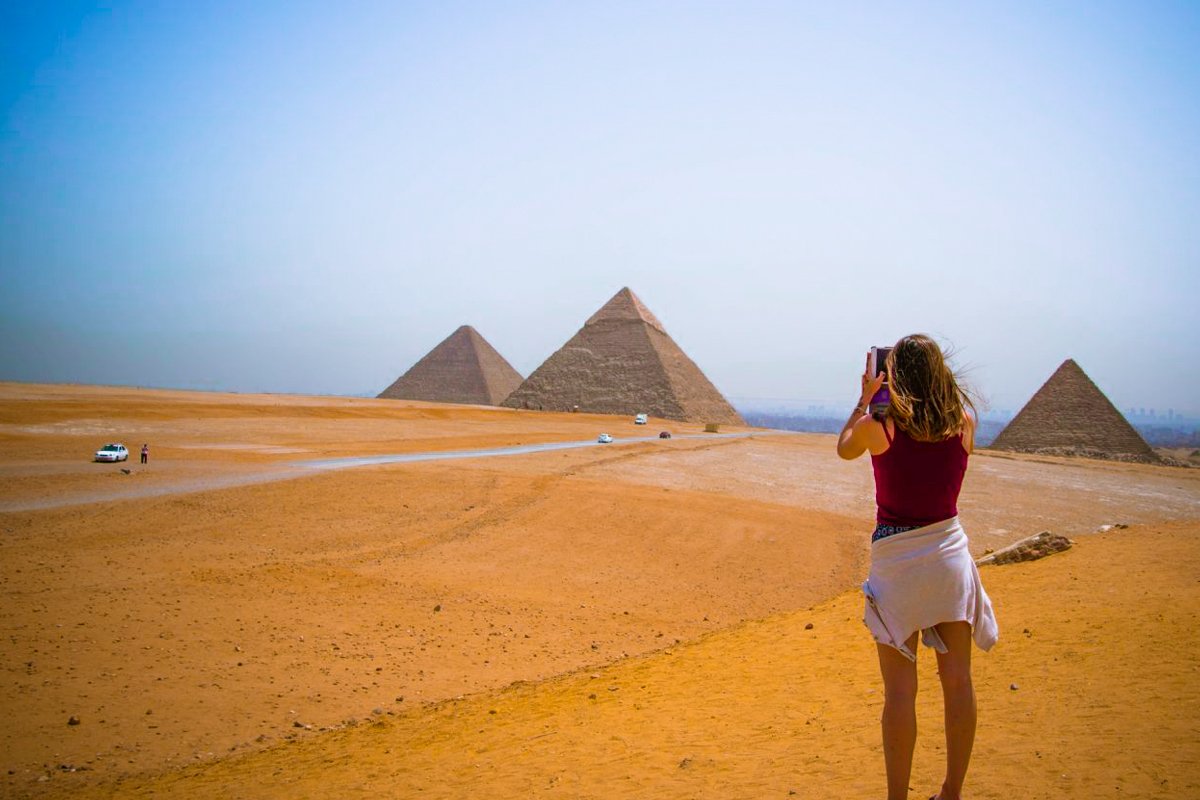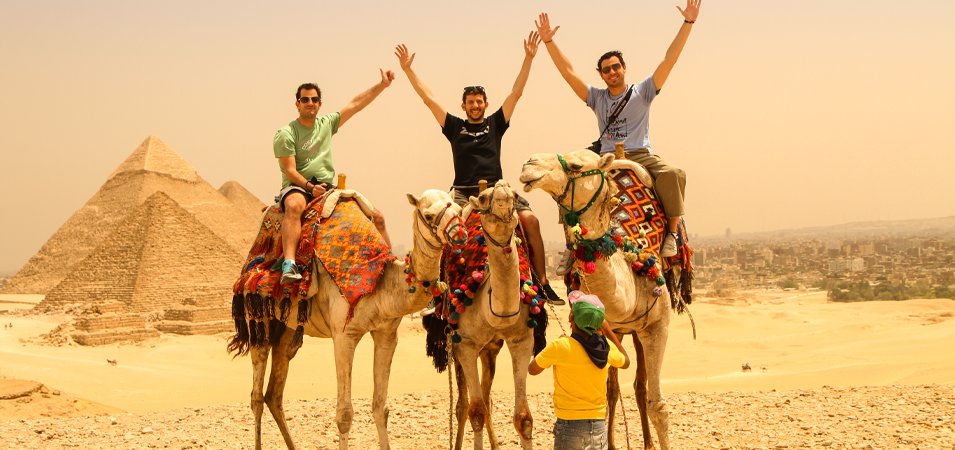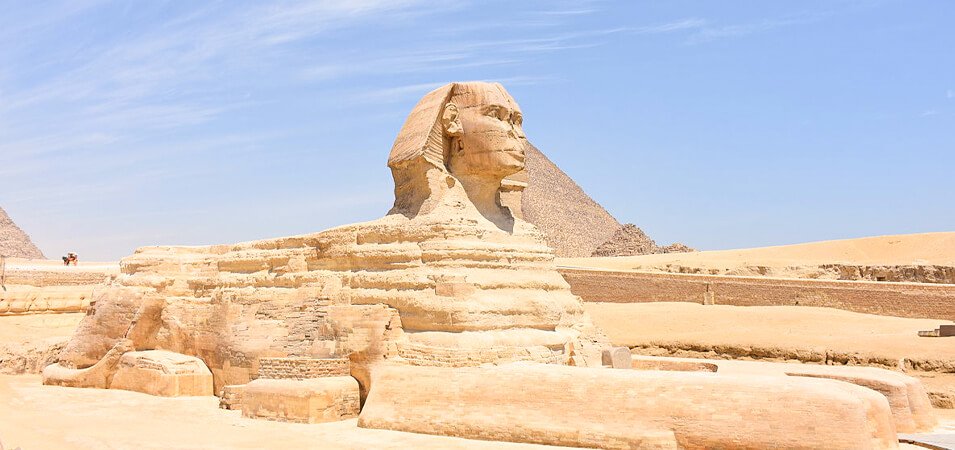Introduction
Standing before the Giza Necropolis isn’t just sightseeing—it’s time travel. You’re about to walk where ancient pharaohs once ruled and builders accomplished the impossible 4,500 years ago.
First, you’ll catch the sunrise painting the pyramids gold. Next, you’ll ride a camel across the desert sands. After that, you’ll unlock the secrets of the mysterious Sphinx. Meanwhile, you’ll feast on authentic Egyptian street food. Finally, you’ll watch the monuments come alive under the stars.
However, this isn’t your typical tourist trap experience. Instead, this is your insider’s guide to doing Giza right. Moreover, we’ll show you how to maximize your time at this UNESCO World Heritage site while avoiding common tourist mistakes.
Planning Your Giza Necropolis Adventure
Best Time to Visit
The Giza Necropolis welcomes visitors year-round, but timing matters significantly. October through April offers the most comfortable weather conditions. Furthermore, these months provide cooler temperatures and lower humidity levels.
During summer months, temperatures soar above 100°F by midday. Consequently, most tourists struggle with the intense heat. Therefore, winter visits are strongly recommended for maximum comfort and enjoyment.
What to Pack for Your Day Trip
Essential items include:
- Comfortable walking shoes with good grip
- Wide-brimmed hat for sun protection
- High-SPF sunscreen (reapply frequently)
- Plenty of water bottles
- Light, breathable clothing
- Portable phone charger
- Small backpack for personal items
Additionally, bring a light jacket for early morning visits. Desert temperatures drop significantly before sunrise. Moreover, the jacket provides protection from sand and wind.
Understanding the Giza Complex Layout
The Giza Necropolis spans approximately 2.5 square kilometers. Three main pyramids dominate the landscape: Khufu (Great Pyramid), Khafre, and Menkaure. Additionally, the complex includes the Great Sphinx, several smaller pyramids, and numerous mastaba tombs.
The main entrance sits on the eastern side. From there, visitors access the pyramid plateau and viewing areas. Furthermore, the complex includes modern facilities like restaurants, gift shops, and restrooms.
Getting to the Pyramids of Giza

From Cairo to Giza: Your Transport Options
Our Transfer Service: We offer comfortable transfers from anywhere in Cairo (or beyond) straight to the Giza Necropolis. Furthermore, no haggling, no meter worries, no getting lost. Simply put, it’s reliable, air-conditioned transport that gets you there stress-free.
Book Our Complete Tour: Want the ultimate hassle-free experience? Then book our full Giza tour package. We handle everything—transport, tickets, expert guides, and insider access. In other words, you just show up and enjoy the adventure.
DIY Options: On the other hand, prefer going solo? Local taxis and tour buses are available, however, expect crowds, language barriers, and inflated tourist prices.
Pro tip: Leave early between 6-7 AM. You’ll beat the crowds, avoid the scorching afternoon sun, and catch that magical sunrise light. Moreover, early arrival ensures better parking spots and shorter entry lines.
Traffic between Cairo and Giza can be unpredictable. Therefore, allow extra time for your journey. Additionally, rush hour typically occurs between 7-9 AM.
Tickets and Entry Information
Arrival & Tickets
Entrance fees run about $10-20 for the main complex. Additionally, want to go inside the Great Pyramid? That’s an extra $15-20 and totally worth it for history buffs.
Nevertheless, skip the touts hanging around the entrance. They’ll try to sell you overpriced tours and “special access” tickets. Instead, head straight to the official ticket booth.
Moreover, bring cash in Egyptian pounds. The ticket office doesn’t always accept cards, and furthermore, you’ll need small bills for tips throughout the day.
Special Access Tickets
Several premium experiences require separate tickets:
- Great Pyramid interior access
- Pyramid of Khafre interior
- Solar Boat Museum
- Photography permits for professional equipment
These tickets have limited daily availability. Consequently, advance booking is recommended during peak season. Furthermore, some experiences have age and health restrictions.
The Must-Do Giza Necropolis Experience

Sunrise & the Perfect Photo Spots
Sunrise transforms the pyramids from stone monuments into golden giants. Consequently, the soft morning light creates shadows that highlight every ancient block.
Best photo spots? Therefore, head to the Panoramic Point behind the sand dunes. You’ll get all three pyramids in one frame without tourist crowds photobombing your shot.
Additionally, the viewing platform near the Sphinx also offers incredible angles. Most tourists miss this spot because they’re rushing to the main pyramid. Furthermore, this location provides stunning backdrop opportunities for group photos.
Professional Photography Tips
Golden hour occurs 30 minutes before sunrise and after sunset. During these times, the Giza Necropolis transforms dramatically. Moreover, the warm lighting eliminates harsh shadows and creates depth.
Use leading lines in your compositions. The desert ridges and ancient pathways guide viewers’ eyes toward the pyramids. Additionally, include foreground elements like desert plants or scattered stones for scale reference.
Exploring the Great Pyramid
Camel or Horse Ride?
Camels are iconic, however, negotiate hard. Handlers will start at $30-40 for 30 minutes. Walk away if they won’t budge, and then they’ll chase you with better prices. Fair price: $10-15 for a half-hour ride.
In contrast, horses move faster and cover more ground, but the ride is bumpier. They’re better for people with back problems who can’t handle camel swaying.
Overall, both animals are well-cared for, but always check they have water and shade available.
Inside the Great Pyramid?
It’s tight, hot, and claustrophobic. You’ll crawl through narrow passages and climb steep ramps in the dark. Nevertheless, reaching the burial chamber? Absolutely mind-blowing.
The Grand Gallery stretches 153 feet long and 28 feet high. Ancient builders constructed this architectural marvel without modern tools. Moreover, the precision remains impressive even by today’s standards.
Alternatively, not feeling the squeeze? The Pyramid of Khafre offers a less crowded alternative. It’s almost as tall and the interior is more spacious.
Therefore, skip the interior visits if you’re dealing with claustrophobia, heart conditions, or mobility issues. The exterior views are spectacular enough.
The Sphinx & Ancient Mysteries

The Sphinx & Beyond
After conquering the pyramids, walk (or take a golf cart) to the Sphinx. In fact, the 10-minute stroll gives you time to process what you just experienced.
The Sphinx stands 66 feet tall and 240 feet long. Fun fact: Napoleon’s troops didn’t actually shoot off its nose—that damage happened centuries earlier!
Furthermore, the best Sphinx photos come from the side angles. The head-on shots everyone takes don’t capture its massive scale.
Sphinx Temple Complex
The Sphinx Temple sits directly in front of the monument. Ancient Egyptians carved this structure from the same limestone bedrock. Additionally, the temple features massive granite blocks weighing up to 200 tons each.
Archaeological evidence suggests the temple served ceremonial purposes. Moreover, the precise alignment with cardinal directions demonstrates advanced astronomical knowledge. Therefore, the Giza Necropolis represents more than just burial sites—it’s a masterpiece of ancient engineering.
Local Cuisine and Dining Options
Lunch Break: Eat Like a Local
After all that exploring, your stomach will be rumbling. Therefore, skip the overpriced tourist restaurants near the entrance.
Instead, dive into Cairo’s incredible street food scene! From sizzling shawarma to hearty koshary, the city’s food culture is as ancient and fascinating as its monuments. Check out our complete guide to Egyptian street food for the best local spots and must-try dishes.
Alternatively, quick option? Grab koshary from a nearby street stall. This mix of rice, lentils, pasta, and spicy sauce costs less than $2 and fills you up perfectly.
Authentic Egyptian Flavors
Traditional Egyptian cuisine reflects the country’s rich history. Consequently, meals often feature ingredients like lentils, rice, vegetables, and aromatic spices. Moreover, most dishes are naturally vegetarian-friendly.
Popular street food options include:
- Ful medames (fava bean stew)
- Falafel (deep-fried chickpea balls)
- Shawarma (grilled meat wraps)
- Baladi bread (fresh-baked flatbread)
- Sugarcane juice (refreshing natural drink)
These foods provide energy for continued exploration. Additionally, they offer authentic cultural experiences beyond the monuments.
Hidden Gems and Lesser-Known Attractions
Solar Boat Museum
Most visitors skip this fascinating attraction. However, the Solar Boat Museum houses one of archaeology’s greatest discoveries. In 1954, archaeologists found a dismantled wooden boat buried beside the Great Pyramid.
The vessel measures 143 feet long and represents ancient Egyptian craftsmanship. Moreover, experts believe it served as Pharaoh Khufu’s solar barque for his journey to the afterlife. Therefore, the museum provides unique insights into ancient Egyptian religious beliefs.
Mastaba Tombs
These rectangular structures predate the pyramids by several centuries. Furthermore, they contain well-preserved wall paintings and hieroglyphic inscriptions. Additionally, the tombs offer glimpses into daily life during the Old Kingdom period.
The mastaba of Seshemnefer IV features colorful relief carvings. Moreover, the tomb of Qar displays scenes of ancient Egyptian activities. Therefore, these monuments complement the main pyramid experience perfectly.
Evening Entertainment and Activities
Ending Your Day Right
Sound & Light Show: Yes, it’s touristy and a bit cheesy. However, watching the Pyramids of Giza light up while listening to their history? Pure magic. Shows run nightly at 7 PM and 8:30 PM.
The spectacle combines dramatic lighting effects with historical narration. Moreover, the show covers 5,000 years of Egyptian history in 45 minutes. Additionally, the experience provides a perfect conclusion to your Giza Necropolis adventure.
Shopping: Additionally, the gift shops near the exit sell decent souvenirs. Negotiate everything—starting prices are inflated for tourists.
Getting Back: Finally, our return transfer service picks you up right at the exit—no waiting, no haggling with drivers. We’ll have you back to your hotel or anywhere in Cairo comfortably and safely.
Souvenir Shopping Tips
Quality varies significantly among vendors. Therefore, examine items carefully before purchasing. Moreover, papyrus paintings should feel smooth and display
vibrant colors. Additionally, genuine alabaster feels cool to the touch and shows translucent properties.
Popular souvenirs include:
- Hand-painted papyrus artwork
- Carved alabaster figurines
- Traditional Egyptian jewelry
- Miniature pyramid replicas
- Hieroglyphic bookmarks
Remember to bargain respectfully. Start at roughly 30% of the asking price. Furthermore, vendors expect negotiation as part of the cultural experience.
Practical Tips for Your Visit
Health and Safety Considerations
The Giza Necropolis requires significant walking on uneven surfaces. Therefore, wear comfortable, sturdy shoes with good traction. Moreover, the desert environment can be challenging for some visitors.
Stay hydrated throughout your visit. Consequently, bring multiple water bottles and drink regularly. Additionally, seek shade during midday hours when temperatures peak.
Cultural Sensitivity
The Giza Necropolis holds deep spiritual significance for Egyptians. Therefore, maintain respectful behavior throughout your visit. Moreover, dress modestly with covered shoulders and knees.
Photography restrictions apply in certain areas. Additionally, some locals prefer not to be photographed. Therefore, always ask permission before taking photos of people.
Conclusion
You’ve just spent a day walking through 4,500 years of history. Those stones you touched? Ancient builders placed them by hand millennia ago. Today, you witnessed the sun rise and set over monuments that have watched civilizations rise and fall.
The Giza Necropolis represents humanity’s greatest architectural achievement. Moreover, this UNESCO World Heritage site continues inspiring visitors from around the world. Furthermore, your experience connects you to countless generations who marveled at these same monuments.
Pyramids checked off your bucket list? Now then, it’s time to feast like a pharaoh! Head back to Cairo and dive into the city’s incredible food scene. Discover the best Egyptian street food spots and cap off your perfect day with flavors as unforgettable as the monuments you just explored.
After all, the pyramids were just the beginning. Egypt has so much more to offer—and it all starts with that first delicious bite. Therefore, your journey through ancient Egypt continues beyond the Giza Necropolis, creating memories that will last a lifetime.
Check out our other articles:

